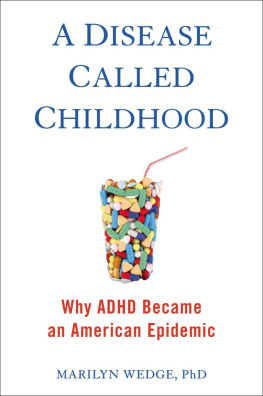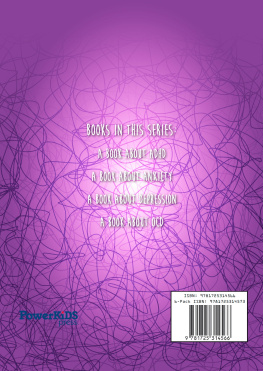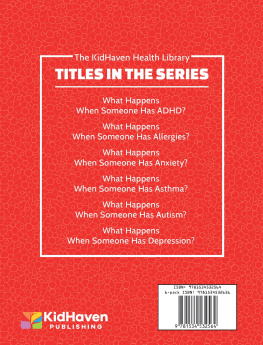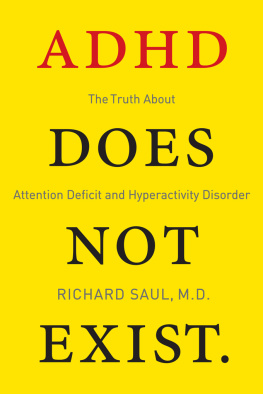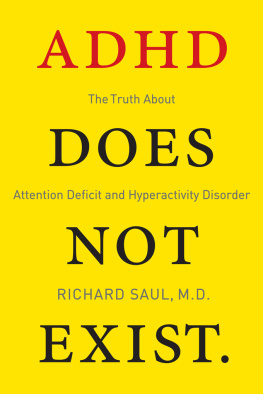Marilyn Wedge - A Disease Called Childhood: Why ADHD Became an American Epidemic
Here you can read online Marilyn Wedge - A Disease Called Childhood: Why ADHD Became an American Epidemic full text of the book (entire story) in english for free. Download pdf and epub, get meaning, cover and reviews about this ebook. year: 2015, publisher: Avery, genre: Science. Description of the work, (preface) as well as reviews are available. Best literature library LitArk.com created for fans of good reading and offers a wide selection of genres:
Romance novel
Science fiction
Adventure
Detective
Science
History
Home and family
Prose
Art
Politics
Computer
Non-fiction
Religion
Business
Children
Humor
Choose a favorite category and find really read worthwhile books. Enjoy immersion in the world of imagination, feel the emotions of the characters or learn something new for yourself, make an fascinating discovery.
- Book:A Disease Called Childhood: Why ADHD Became an American Epidemic
- Author:
- Publisher:Avery
- Genre:
- Year:2015
- Rating:4 / 5
- Favourites:Add to favourites
- Your mark:
A Disease Called Childhood: Why ADHD Became an American Epidemic: summary, description and annotation
We offer to read an annotation, description, summary or preface (depends on what the author of the book "A Disease Called Childhood: Why ADHD Became an American Epidemic" wrote himself). If you haven't found the necessary information about the book — write in the comments, we will try to find it.
In 1987, only 3 percent of American children were diagnosed with attention-deficit/hyperactivity disorder, also known as ADHD. By 2000, that number jumped to 7 percent, and in 2014 the number rose to an alarming 11 percent. To combat the disorder, two thirds of these children, some as young as three years old, are prescribed powerful stimulant drugs like Ritalin and Adderall to help them cope with symptoms. Meanwhile, ADHD rates have remained relatively low in other countries such as France, Finland, and the United Kingdom, and Japan, where the number of children diagnosed with and medicated for ADHD is a measly 1 percent or less.
Alarmed by this trend, family therapist Marilyn Wedge set out to understand how ADHD became an American epidemic. If ADHD were a true biological disorder of the brain, why was the rate of diagnosis so much higher in America than it was abroad? Was a childs inattention or hyperactivity indicative of a genetic defect, or was it merely the expression of normal behavior or a reaction to stress? Most important, were there alternative treatments that could help children thrive without resorting to powerful prescription drugs? In an effort to answer these questions, Wedge published an article in Psychology Today entitled Why French Kids Dont Have ADHD in which she argued that different approaches to therapy, parenting, diet, and education may explain why rates of ADHD are so much lower in other countries.
In A Disease Called Childhood, Wedge examines how myriad factors have come together, resulting in a generation addictied to stimulant drugs, and a medical system that encourages diagnosis instead of seeking other solutions. Writing with empathy and dogged determination to help parents and children struggling with an ADHD diagnosis, Wedge draws on her decades of experience, as well as up-to-date research, to offer a new perspective on ADHD. Instead of focusing only on treating symptoms, she looks at the various potential causes of hyperactivity and inattention in children and examines behavioral and environmental, as opposed to strictly biological, treatments that have been proven to help. In the process, Wedge offers parents, teachers, doctors, and therapists a new paradigm for child mental health--and a better, happier, and less medicated future for American children
Marilyn Wedge: author's other books
Who wrote A Disease Called Childhood: Why ADHD Became an American Epidemic? Find out the surname, the name of the author of the book and a list of all author's works by series.

